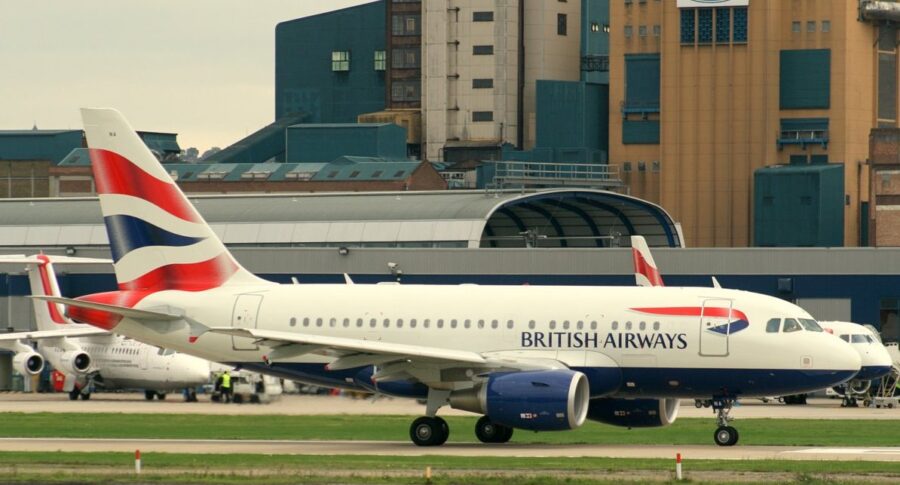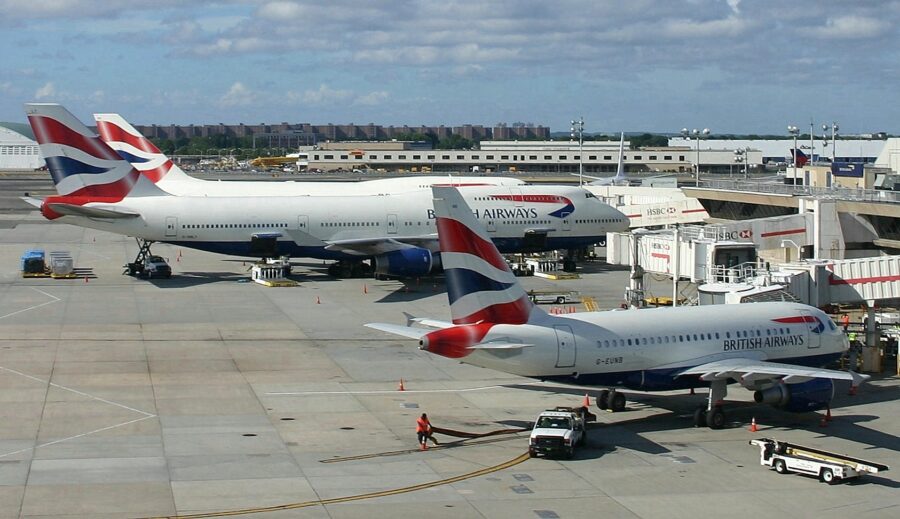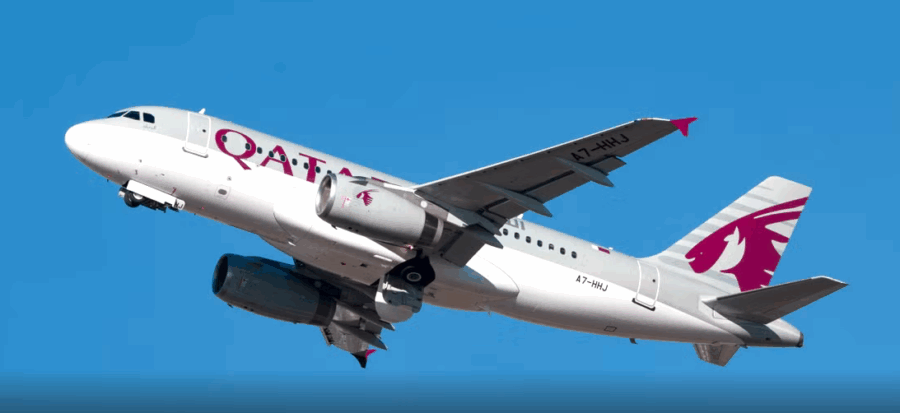Airbus A319LR and BA1: The Rise and Fall of the Boutique Transatlantic Jet

The Airbus A319LR was one of Airbus’s boldest experiments—a narrowbody stretched beyond its limits and reimagined for long-haul, premium travel. Introduced in the early 2000s, the “LR” (Long Range) variant of the A319 was fitted with up to three Additional Centre Tanks (ACTs), boosting range to roughly 4,500 nautical miles (8,300 km). Configured in exclusive all-business layouts of just 32 to 48 lie-flat seats, the A319LR was marketed as a flying boutique—a hybrid between a commercial jet and a corporate aircraft.
For a brief but compelling moment, it looked unstoppable. Airlines like Qatar Airways, Swiss International Air Lines (through PrivatAir), and Lufthansa experimented with bespoke, all-business transatlantic services. Routes once unthinkable for a narrowbody—Cleveland to Dublin, Düsseldorf to Newark, Doha to London—suddenly became possible.
A Jet Built for Niche Routes
In the early 2000s, Airbus introduced the A319-100LR (A319LR), a long-range version of the A319 designed with up to five additional center fuel tanks installed in the belly cargo hold. This modification extended the aircraft’s typical range to about 4,500 nautical miles (8,300 km), compared to the standard A319. Qatar Airways became the launch customer, taking delivery of two A319LRs. Soon after, PrivatAir received two aircraft in 2003, while Italy’s Eurofly acquired two more in 2005.
Alongside the LR, Airbus also developed the A319 Corporate Jet (A319CJ), later rebranded as the ACJ319 “Elegance.” This business jet variant was equipped with removable auxiliary center tanks (ACTs)—up to six installed in the cargo bay—to achieve even greater endurance. With a typical payload of eight passengers and maximum auxiliary tanks, the ACJ319 could fly up to 6,000 nautical miles (11,100 km). The ACJ319 also featured an increased service ceiling of 41,000 ft (12,500 m), making it a popular choice in the VIP and government jet market for its range, comfort, and versatility.
The appeal of the A319LR was clear: connect secondary business centers directly with global hubs, bypassing congested airports and avoiding the need for widebodies. PrivatAir, operating on behalf of Lufthansa and Swiss in the mid-2000s, pioneered the concept of a 48-seat all-business jet between Europe and the U.S. Qatar Airways deployed the A319LR between Doha and London Heathrow in 2005, branding it as an “executive jet service” with just 40 business seats. These aircraft felt more like private jets than traditional airliners.
But the most famous use of the A319 family for transatlantic business travel wasn’t the A319LR—it was British Airways’ A318 “baby bus” experiment.

BA1 and the “Baby Bus” to New York
In September 2009, British Airways launched flights BA1 and BA2—the spiritual successors to Concorde. Instead of supersonic glamour, BA turned to the Airbus A318, the smallest member of the A320 family. Configured with just 32 lie-flat Club World seats, the “Baby Bus” was transformed into an all-business-class boutique jet. Its mission: link London City Airport (LCY), in the heart of the financial district, with New York JFK in unmatched convenience.
While Concorde embodied futuristic speed, the A318 was far more ordinary—often dismissed as the runt of the Airbus family, with only a handful of global operators. Yet BA spotted an opportunity: a chance to offer exclusivity, privacy, and proximity to London’s financial hub for bankers, lawyers, and executives willing to pay a premium.
London City’s short 1,508-meter (4,948-foot) runway imposed a unique challenge. The A318 could not depart westbound with a full fuel load, so every flight to New York required a refueling stop in Shannon, Ireland. This inconvenience doubled as an advantage. Passengers cleared U.S. immigration in Shannon during the refueling stop, arriving at JFK as domestic travelers able to bypass long customs lines. Combined with LCY’s short check-in times—bags accepted up to 20 minutes before departure—the service often saved time overall compared to Heathrow.
Onboard, the product was crafted with executives in mind. The 2–2 seating layout featured forward-facing lie-flat beds—more straightforward and comfortable than the “yin-yang” configuration used on BA’s widebodies. The cabin was quiet, intimate, and designed for productivity or rest, later enhanced by the addition of Wi-Fi. iPads were provided for in-flight entertainment, as the aircraft lacked built-in screens, while meals were served before departure at London City, followed by light snacks and drinks during the flight. The overall experience captured a sense of Concorde-like exclusivity, if not its speed, offering a uniquely refined way to cross the Atlantic.
The aircraft were officially retired in 2020, and the London City–New York service was suspended with no plans for revival.
The Economic Reality
Beneath the luxury lay a fragile business model. The auxiliary tanks that gave the A319LR its extended range also consumed valuable belly space, wiping out cargo capacity—a vital revenue stream on transatlantic flights. Operating costs were nearly the same as a standard narrowbody, but with only 32–40 passengers to cover them. On a per-seat basis, the A319LR burned more fuel than widebodies such as the Boeing 767 or Airbus A330.
When the 2008 global financial crisis slashed corporate travel budgets, the economics of ultra-premium narrowbody services collapsed. Demand for high-fare exclusivity dried up almost overnight. British Airways kept its boutique BA1/BA2 A318 route alive through the 2010s, but it never scaled. It remained a curiosity—admired by loyal passengers but unsustainable in yield. By March 2020, as COVID-19 shut down global travel, BA quietly retired its last two A318s and ended the service for good. Qatar Airways’ A319LRs and PrivatAir’s all-business services had already disappeared years earlier.
Another factor in the A319LR’s demise was the arrival of the Airbus A321LR, which delivered a far more compelling mix of range, economics, and flexibility. Unlike the all-business A319LR, the A321LR could carry both business and economy passengers on long-haul routes while remaining profitable.
In October 2014, Airbus began marketing a higher-weight A321 variant with a maximum takeoff weight of 97 tonnes (214,000 lbs) and three auxiliary fuel tanks. This new jet offered around 100 nautical miles more range than the Boeing 757-200, positioning it as a true replacement. The A321LR was officially launched on January 13, 2015, with a 4,000-nautical-mile (7,400 km) range in a two-class configuration seating 206 passengers. It completed its first flight on January 31, 2018, was certified in October 2018, and Arkia became the first operator on November 13, 2018—ushering in a new era for long-range narrowbody flying.

Legacy of the A319LR
The A319LR and British Airways’ BA1 experiment left a lasting imprint on aviation. They proved two important lessons: first, that there is real demand for point-to-point long-haul flights linking niche city pairs without requiring mega-hub connections; and second, that premium passengers value exclusivity, but not at any cost. When the economics collapse, prestige alone cannot sustain a route.
In many ways, the A319LR was simply ahead of its time. Conceived in the late 1990s and entering service in the early 2000s, it emerged in an era dominated by widebodies, where fuel efficiency and cargo revenue were essential. By sacrificing belly space for range, the aircraft compromised its financial viability. Yet in doing so, it anticipated what manufacturers would later perfect.
That perfection arrived with the Airbus A321LR and A321XLR. With ranges of 4,000–4,700 nautical miles, new-generation engines, and optimized aerodynamics, they overcame the A319LR’s shortcomings. They preserved cargo space, delivered better per-seat economics, and gave airlines the flexibility to fly both all-premium and mixed-class layouts. Modern cabins—quieter, more spacious, and fully connected—broadened their appeal to both business and leisure travelers.
Today, airlines such as JetBlue, TAP Air Portugal, Aer Lingus, SAS, and soon American and United are operating the A321LR or preparing for the XLR. These aircraft already fly routes once unimaginable for narrowbodies: New York–Lisbon, Boston–Dublin, Montreal–Athens. In doing so, they are realizing the promise that the A319LR and BA1 hinted at—long-thin connectivity built on efficiency rather than exclusivity.
Far from being forgotten, the A319LR’s legacy endures as both a cautionary tale and a blueprint. It showed the risks of pushing technology and economics beyond their time, but also the potential of smaller long-range jets to reshape networks. The A319LR may be gone from fleets, but its spirit lives on each time an A321LR or XLR crosses the Atlantic—proof that the boutique dream of BA1 was not wasted, only waiting for the right aircraft to make it viable.

A Cautionary Tale
The A319LR and BA1 stand as both a milestone and a warning in aviation history. They were built to revolutionize premium transatlantic travel—aircraft small enough to slip into niche airports like London City, yet luxurious enough to offer a boutique, all-business-class experience. They promised to connect financiers in Canary Wharf directly to Manhattan, bypassing the congestion of Heathrow and the anonymity of widebody cabins. For a brief moment, they captured the imagination of the industry and passengers alike.
Yet their downfall revealed the unforgiving economics of long-haul flying. Cargo capacity, often the hidden profit engine of transatlantic routes, was sacrificed for range. Operating costs were spread across just a few dozen passengers, making yields precarious. When financial markets faltered in 2008, the model collapsed, showing that glamour and convenience could not shield an airline from the cold arithmetic of revenue and cost.
Still, the legacy of the A319LR endures. It proved that passengers valued convenience as much as prestige, that a smaller jet could cross the Atlantic reliably, and that exclusivity was appealing—but only when balanced by sustainability. In many ways, the aircraft was ahead of its time, anticipating the long-range narrowbody revolution now unfolding with the A321LR and XLR.
Today, when a JetBlue A321LR lifts off from Boston for London, or an Aer Lingus XLR prepares to link smaller U.S. cities with Dublin, they carry forward the lesson of BA1. The boutique jet may have failed as a business case, but it succeeded as a prototype of what was to come: a vision of point-to-point travel reshaped by efficiency rather than extravagance.
The story of the A319LR and BA1 is thus not just about an aircraft retired or a route discontinued—it is about aviation’s constant dance between innovation and economics. It reminds us that bold ideas can stumble, but in stumbling, they often clear the path for the next generation to soar.
Related News: https://airguide.info/?s=airbus+A319
Sources: AirGuide Business airguide.info, bing.com, en.wikipedia.org, airbus.com, britishairways.com
